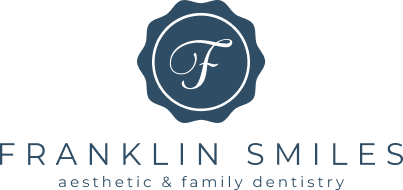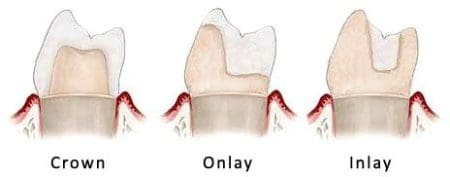Franklin, TN Porcelain Onlays
No matter what type of dental restoration you need done, Dr. Weber is committed to preserving as much of your natural tooth structure as possible. For this reason, he loves to protect weakened teeth with porcelain onlays, rather than crowns, whenever appropriate.
The Advantages of Porcelain Onlays
When only part of a tooth has been weakened by decay, rather than the whole tooth, an onlay can be used in place of a crown. An onlay covers just the weak portion of the tooth instead of completely encasing the tooth the way a crown would. This requires far less drilling, which allows more of the original tooth—the healthy part—to be preserved.
As shown in the diagram below, another difference between onlays and crowns is that whereas crowns go all the way down to the gum line, onlays do not. An onlay, then, not only prevents gum irritation but also makes the restored tooth easier to clean, resulting in a lower risk of further decay.
Onlays cover at least one cusp of the tooth. If both cusps are healthy, an inlay can be used to protect the area between them. Both restorations allow for maximum tooth preservation.
High-Strength Ceramics
The onlays and inlays Dr. Weber uses are made of modern, high-strength ceramics. Porcelain is one type of ceramic, but there are others that offer the same aesthetic benefits as porcelain. E.max, a brand of ceramic made of lithium disilicate, and zirconia are the two types of ultra-strong ceramics used in our practice. With these materials, Dr. Weber is able to provide durable, natural-looking dental restorations.




